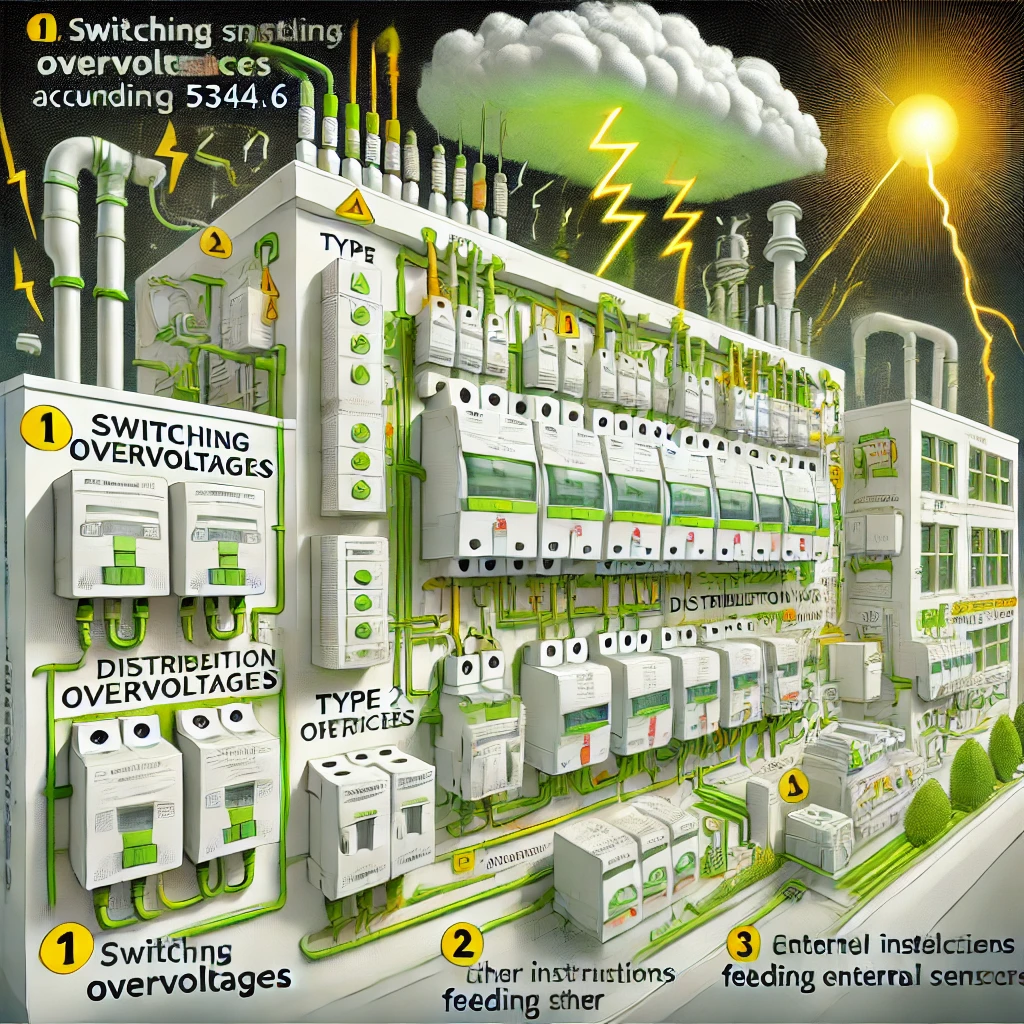What is the difference between Type 2 and Type 3 SPDs? Surge Protection Device (SPD) Installation Requirements According to BS 7671
Consideration shall be given to the provision of SPDs to protect from other sources, such as: switching overvoltages produced by current-using equipment located within the installation, overvoltages on other incoming services such as metallic telecommunication and signalling services, and overvoltages on other services feeding other structures such as secondary buildings, external installations/lighting, power lines feeding external sensors. (Regulation 534.4.1.6)

OW London Electrician and Home Automation Engineers Team
Surge Protection Device (SPD) Installation Requirements According to BS 7671
Regulation 534.4.1.6 states:
"Consideration shall be given to the provision of SPDs to protect from other sources, such as:
- (i) switching overvoltages produced by current-using equipment located within the installation
- (ii) overvoltages on other incoming services such as metallic telecommunication and signalling services
- (iii) overvoltages on other services feeding other structures such as secondary buildings, external installations/lighting, power lines feeding external sensors."
Notes:
- Type 1 or Type 2 SPDs should be installed to mitigate switching overvoltages.
- Type 2 or Type 3 SPDs are recommended for protection from overvoltages on incoming services.
- Type 2 or Type 3 SPDs should be used to protect other structures connected to the main installation.
Explanation of Regulation 534.4.1.6
This regulation mandates the consideration of installing Surge Protection Devices (SPDs) in various parts of an electrical installation to guard against overvoltages. These overvoltages can originate from different sources and can cause significant damage to electrical systems and equipment.
Switching Overvoltages (Clause i)
Source: These are generated by the switching actions of devices and equipment within the same electrical installation.
Protection: To mitigate these overvoltages, Type 1 or Type 2 SPDs should be installed near the origin of the electrical installation, such as the main distribution board.
Overvoltages from Incoming Services (Clause ii)
Source: Overvoltages can also come from external sources like telecommunication lines or signaling services that are connected to the installation.
Protection: Type 2 or Type 3 SPDs are recommended to protect the installation from such external overvoltages. These are typically placed at the distribution circuits or sub-distribution boards.
Overvoltages on Other Services Feeding Other Structures (Clause iii)
Source: Other structures connected to the main installation, such as secondary buildings, outdoor lighting installations, and external sensors, can introduce overvoltages.
Protection: Type 2 or Type 3 SPDs should be used in these scenarios as well, ensuring the sensitive equipment in these areas is adequately protected.

Frequently Asked Questions
Q: Where should Type 1 SPDs be installed?
A: Type 1 SPDs are typically installed at or near the origin of the electrical installation, such as the main distribution board, to protect against direct lightning strikes or large surges from external sources. (Regulation 534.4.1.6)
Q: What is the difference between Type 2 and Type 3 SPDs?
A: Type 2 SPDs are designed for protection against residual lightning energy and other transient overvoltages. They are typically installed at distribution boards. Type 3 SPDs offer protection for sensitive equipment and are installed close to the equipment being protected, such as at socket outlets or within final circuits. (Regulation 534.4.1.6)
Q: How do I determine if SPDs are required for my installation?
A: The need for SPDs can be determined by conducting a risk assessment in accordance with the guidance provided in BS 7671, considering factors such as the installation environment, the value and sensitivity of the equipment, and the potential sources of overvoltages. (Regulation 534.4.1.6)
Q: What types of installations need to consider SPDs for telecommunication and signaling services?
A: Installations with incoming services like metallic telecommunication and signaling services need to consider Type 2 or Type 3 SPDs to protect against overvoltages from these external sources. (Regulation 534.4.1.6)
Q: Why is it important to protect secondary buildings and external installations with SPDs?
A: Secondary buildings and external installations such as lighting and sensors are vulnerable to overvoltages from the main installation or external sources, and Type 2 or Type 3 SPDs help safeguard these sensitive areas from potential damage. (Regulation 534.4.1.6)
What users Saying
Discover what our customers think about our services. Their feedback reflects our commitment to delivering exceptional service and expert solutions for all electrical and security needs.

